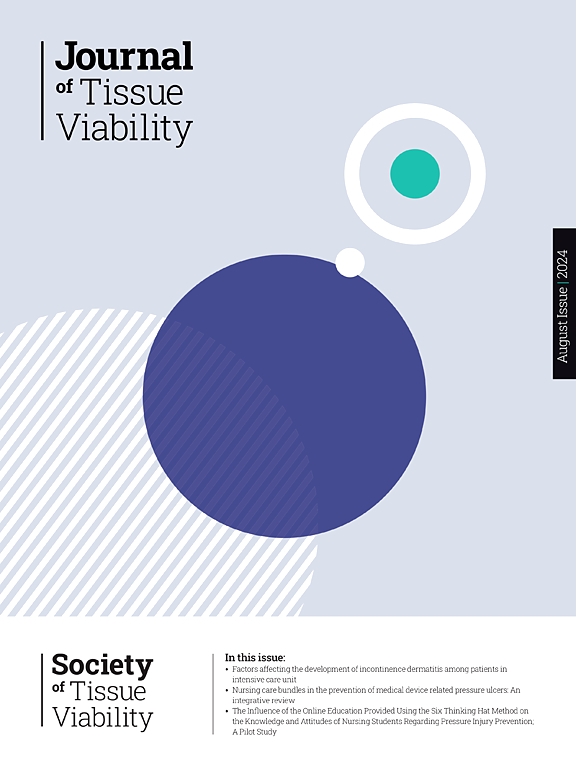The effect of topical insulin therapy on diabetic foot ulcers: A systematic review and meta-analysis
IF 2.4
3区 医学
Q2 DERMATOLOGY
引用次数: 0
Abstract
Aims
To systematically analyze the effect of topical insulin therapy on diabetic foot ulcers and to offer guidance for clinical practice.
Methods
We conducted a quantitative systematic review of the study in 9 representative databases for the effect of topical insulin therapy on diabetic foot ulcers. Meta-analysis was performed with Review-Manager. 5.4. This study has been registered on the official Prospero website, and the registration code is CRD42024581466.
Results
Twelve studies involving 731 patients were included. The meta-analysis results showed that compared with conventional treatment, topical insulin therapy can reduce wound healing time (P < 0.001), and wound area (P < 0.001), inflammatory factors (serum interleukin-1, interleukin-6, tumor necrosis factor-α(P < 0.001), advanced glycation end products (P < 0.001). Additionally, it improved the degree of granulation tissue regeneration (P < 0.001), microvascular density (P < 0.001), vascular endothelial growth factor (P < 0.001), and the expression of β-catenin in wound tissue (P < 0.001). However, there was no statistically significant difference in fasting plasma glucose (P > 0.05).
Conclusion
Topical insulin therapy is effective in promoting wound healing and reducing inflammation in DFU patients, but its impact on blood glucose control remains uncertain. Further, high-quality RCTs are needed to confirm these findings.
局部胰岛素治疗对糖尿病足溃疡的影响:系统回顾和荟萃分析
目的系统分析外用胰岛素治疗糖尿病足溃疡的效果,为临床提供指导。方法对9个代表性数据库的研究进行定量系统评价,探讨局部胰岛素治疗对糖尿病足溃疡的影响。meta分析采用Review-Manager进行。5.4. 本次研究已在普洛斯彼罗官网注册,注册码为CRD42024581466。结果纳入12项研究,731例患者。meta分析结果显示,与常规治疗相比,外用胰岛素治疗可缩短创面愈合时间(P <;0.001),伤口面积(P <;0.001)、炎症因子(血清白细胞介素-1、白细胞介素-6、肿瘤坏死因子-α(P <;0.001),晚期糖基化终产物(P <;0.001)。提高肉芽组织再生程度(P <;0.001),微血管密度(P <;0.001),血管内皮生长因子(P <;0.001),伤口组织中β-catenin的表达(P <;0.001)。但两组空腹血糖差异无统计学意义(P >;0.05)。结论局部胰岛素治疗对DFU患者具有促进创面愈合、减轻炎症的作用,但对血糖控制的影响尚不明确。此外,需要高质量的随机对照试验来证实这些发现。
本文章由计算机程序翻译,如有差异,请以英文原文为准。
求助全文
约1分钟内获得全文
求助全文
来源期刊

Journal of tissue viability
DERMATOLOGY-NURSING
CiteScore
3.80
自引率
16.00%
发文量
110
审稿时长
>12 weeks
期刊介绍:
The Journal of Tissue Viability is the official publication of the Tissue Viability Society and is a quarterly journal concerned with all aspects of the occurrence and treatment of wounds, ulcers and pressure sores including patient care, pain, nutrition, wound healing, research, prevention, mobility, social problems and management.
The Journal particularly encourages papers covering skin and skin wounds but will consider articles that discuss injury in any tissue. Articles that stress the multi-professional nature of tissue viability are especially welcome. We seek to encourage new authors as well as well-established contributors to the field - one aim of the journal is to enable all participants in tissue viability to share information with colleagues.
 求助内容:
求助内容: 应助结果提醒方式:
应助结果提醒方式:


